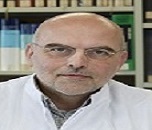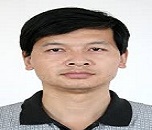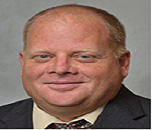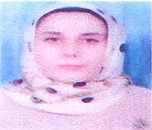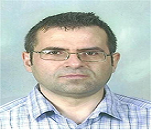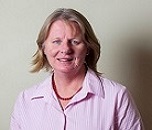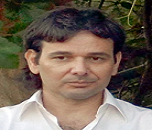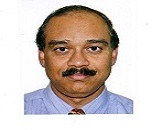Theme: Benchmark practices and accelerating computational approaches for Pediatric Oncology
Pediatric Oncology 2016
Accreditation Statement
This activity has been planned and implemented in accordance with the accreditation requirements and policies of the Accreditation Council for Continuing Medical Education (ACCME) through the joint providership of PeerPoint Medical Education Institute and Conference Series, LLC. PeerPoint Medical Education Institute is accredited by the ACCME to provide continuing medical education for physicians.
Designation Statement
PeerPoint Medical Education Institute designates the live format for this educational activity for AMA PRA Category 1 Credits™. Physicians should only claim credit commensurate with the extent of their participation in the activity.
ConferenceSeries Ltd invites all the participants from all over the world to attend "International Conference and Exhibition on Pediatric Oncology and Clinical Pediatrics" during August 11-13, 2016 in Toronto, Canada which includes prompt keynote presentations, Oral talks, Poster presentations and Exhibitions.
Pediatric Oncology 2016 has an incidence of more than 175,000 per year, and a mortality rate of approximately 96,000 per year. In developed countries, childhood cancer has a mortality of approximately 20% of cases. In low resource settings, on the other hand, mortality is approximately 80% , or even 90% in the world's poorest countries. In many developed countries the incidence is slowly increasing, as rates of childhood cancer increased by 0.6% per year between 1975 to 2002 in the United States and by 1.1% per year between 1978 and 1997 in Europe. OMICS International organizes a conference series of 1000+ Global Events inclusive of 300+ Conferences, 500+ Upcoming and Previous Symposiums and Workshops in USA, Europe & Asia with support from 1000 more scientific societies and publishes 700+ Open access journals which contains over 30000 eminent personalities, reputed scientists as editorial board members.
Why to attend?
To create opportunity for creative people and the companies they work with to develop their careers, to bring together people from a wide area to meet and share ideas. To become familiar with the Pediatric Oncology related tools available today, their cost, how they are used at other institutions and how they can be put to use in your research or project. Hear from self-taught experts in Pediatric Oncology as they share their successes and failures.
Target Audience:
-
Pediatric Oncology Students, Scientists
-
Pediatric Oncology Researchers
-
Pediatric Oncology Faculty
-
Medical Colleges
-
Pediatric Oncology Associations and Societies
-
Business Entrepreneurs
-
Training Institutes
-
Pharmaceutical Manufacturing Companies
-
Software Developing Companies
-
Data Management Companies
-
Pediatric Oncology Physicians
Welcome Message by Dr. Norbert Graf
Dear Participants of the International Conference on Pediatric Oncology 2016,
It is a great pleasure for me to see that a main theme of this year's conference is: ‘Benchmark practices and accelerating computational approaches for Pediatric Oncology’. Computational Oncology is getting more and more important in medicine. This is also the case for Pediatric Oncology. In several European funded projects I am involved in developing IT tools for gaining new knowledge by joining and analyzing heterogeneous data of patients. Based on individual patients these tools can serve as decision support services. It is my strong believe that such tools will be part of physician's daily clinical care for patients in the future. Such tools will help to get better diagnosis and treatments for individuals, including children with cancer, thus paving the way to personalized medicine. Together with the scientific coordinator of the EU funded Research project CHIC (Computational horizon in cancer) - Prof. Dr. Georgios Stamatakos from the Technical University in Athens - I would like to invite you to our CHIC workshop held at this conference. CHIC proposes the development of clinical trial driven tools, services and infrastructures that will support the creation of multiscale cancer hypermodels (integrative models). CHIC aspires to make a breakthrough in multiscale cancer modeling through greatly facilitating multi-modeller cancer hypermodelling and its clinical adaptation and validation. One of these hyper models being developed calculates the response of preoperative chemotherapy in children with nephroblastoma, predicting the amount of tumor shrinkage by actinomycin D and vincristine in case of localized nephroblastoma. We will demonstrate this model during the workshop and present further details and results of the CHIC project including also legal and ethical issues.
Professor Stamatakos and me wholeheartedly welcome you at the conference and at our workshop. We also thank the organizing committee for their great work and making it possible to present you new results in computational approaches for Pediatric Oncology.
Dr. Norbert Graf
Director of the Clinic for Paediatric Oncology and Haematology
Saarland University
Germany
Accreditation Statement
This activity has been planned and implemented in accordance with the accreditation requirements and policies of the Accreditation Council for Continuing Medical Education (ACCME) through the joint providership of PeerPoint Medical Education Institute and Conference Series, LLC. PeerPoint Medical Education Institute is accredited by the ACCME to provide continuing medical education for physicians.
Designation Statement
PeerPoint Medical Education Institute designates the live format for this educational activity for AMA PRA Category 1 Credits™. Physicians should only claim credit commensurate with the extent of their participation in the activity.
Conference Series LLC Conferences invites all the participants from all over the world to attend "International Conference and Exhibition on Pediatric Oncology and Clinical Pediatrics" during August 11-13, 2016 in Toronto, Canada which includes prompt keynote presentations, Oral talks, Poster presentations and Exhibitions.
Pediatric Oncology 2016 is a global platform to discuss and learn about Pediatric Oncology, Types of Pediatric Oncology, Pediatric Hematology Oncology , Pediatric Leukemia, Neuroblastoma in Children, Brain Tumor in Children, Clinical Trials, Advances in Pediatric Oncology Treatment, Oncology Nursing and Care, Advanced Pediatric Oncology Drugs, Pediatric Radiation Oncology, Pediatric Oncology Diagnostic, Radiotherapy Oncology, Pediatric Neuro- Oncology.
Track 1: Pediatric Oncology
Pediatric oncology is a strength discipline in drug concerned with diagnosing and treating kids, as a rule up to the age of 18, with malignancy. It is thought to be one of the most challenging of specialties because, despite successful treatment of many children, there is a high death rate still connected with different sorts of malignancies. Sorts of Pediatric Oncology incorporate Pediatric Hematology Oncology, Pediatric Leukemia, Neuroblastoma in Children, Brain Tumor in Children, Clinical Trials, Advances in Pediatric Oncology Treatment, Oncology Nursing and Care, Advanced Pediatric Oncology Drugs, Pediatric Radiation Oncology, Pediatric Oncology Diagnostic, Radiotherapy Oncology, Pediatric Neuro-Oncology.
Related Conferences: Pediatrics Conferences September 14-16, 2016 Amsterdam, The Netherlands; Pediatric Surgery Conferences September 14-16, 2016 Amsterdam, Netherlands; Pediatric Dermatology Conferences October 10-11, 2016 Manchester, UK; Neonatology Conferences November 14-16, 2016 Valencia, Spain; Neonatal Conferences November 14-16, 2016 Valencia, Spain; Pediatric Neurology Conference November 14-16, 2016 Valencia, Spain; European School of Radiology GALEN Advanced Course: Pediatric Imaging September 17-18 2015, Turkey; European Academy of Pediatrics, congress and Mastercourse 2015 September 17-20 2015, Norway; Clinical Medicine - Clinical Pediatrics, Family and Emergency Medicine Conference September 18-20, Canada; 4th International Conference on Immunotherapy in Pediatric Oncology September 25-26 2015, United States; 43rd Annual Meeting of the International Society for Pediatric Neurosurgery October 04-08 2015, Turkey
Track 2: Types of Pediatric Oncology
The most common cancer in children are Leukemia, which are cancers of the bone marrow and blood, are the most common childhood cancers. They account for about 30% of all cancers in children. Brain and central nervous system tumors are the second most common cancers in children, making up about 26% of childhood cancers. Neuroblastoma starts in early forms of nerve cells found in a developing embryo or fetus. About 6% of childhood cancers are neuroblastomas. Wilms tumor starts in one, or rarely, both kidneys. It is most often found in children about 3 to 4 years old. It can show up as a swelling or lump in the belly (abdomen). It accounts for about 5% of childhood cancers. Lymphoma start in certain cells of the immune system called lymphocytes. They most often grow in lymph nodes and other lymph tissues, like the tonsils or thymus. Rhabdomyosarcoma starts in cells that normally develop into skeletal muscles. It makes up about 3% of childhood cancers. Osteosarcoma is most common in teens, and usually develops in areas where the bone is growing quickly, such as near the ends of the long bones in the legs or arms. Ewing sarcoma is a less common type of bone cancer, which can also cause bone pain and swelling. It is most often found in young teens. Germ cell tumors make up about 3% of all childhood cancers. Ninety percent of germ cell tumors are gonadal which are found in the ovaries or testicles and are more common in children and adolescents. Pleuropulmonary blastoma (PPB) is a rare childhood cancer occurring in the chest, specifically in the lungs or in the coverings of the lungs called "pleura". Hepatoblastoma is the most common primary liver tumor in children, accounting for just over 1% of pediatric cancers.
Related Conferences: Pediatrics Conferences September 14-16, 2016 Amsterdam, The Netherlands; Pediatric Surgery Conferences September 14-16, 2016 Amsterdam, Netherlands; Pediatric Dermatology Conferences October 10-11, 2016 Manchester, UK; Neonatology Conferences November 14-16, 2016 Valencia, Spain; Neonatal Conferences November 14-16, 2016 Valencia, Spain; Pediatric Neurology Conference November 14-16, 2016 Valencia, Spain; ESMO Sarcoma & GIST Conference 2016 February 16-17 2016, Italy; 2016 Gastrointestinal Cancers Symposium (AGA, ASCO, ASTRO & SSO) January 21-23 2016, California; 16th Annual Targeted Therapies of Lung Cancer Meeting (IASLC) February 17-20 2016, California; 7th European Multidisciplinary Meeting on Urological Cancers (EMUC) November 12-15 2015, Spain; 14th International Kidney Cancer Symposium November 6 -7 2015, Florida
Track 3: Pediatric Haematology Oncology
Pediatric hematology is the branch of pediatrics dealing with study, diagnosis, treatment and prevention different types of blood disorders including the study of bleeding and clotting disorders in children. The study of Tumor Cell Biology reviews applications concerned with signal transduction mechanisms in neoplastic cells, and regulation of tumor cell phenotype and behavior, and tumor progression. It important to study causes, risk factors and the hypothesis in pediatrics with hematology disorders. A medical practitioner who specializes in this field of pediatric hematology is called pediatric hematologist. It is important that one should be familiar with the educational and preventive measures in order to prevent children being affected with blood disorders.
Related Conferences: Pediatrics Conferences September 14-16, 2016 Amsterdam, The Netherlands; Pediatric Surgery Conferences September 14-16, 2016 Amsterdam, Netherlands; Pediatric Dermatology Conferences October 10-11, 2016 Manchester, UK; Neonatology Conferences November 14-16, 2016 Valencia, Spain; Neonatal Conferences November 14-16, 2016 Valencia, Spain; Pediatric Neurology Conference November 14-16, 2016 Valencia, Spain; ASH Meeting on Hematologic Malignancies September 17-19 2015, United States; 4th International Conference on Immunotherapy in Pediatric Oncology September 25-26 2015, United States; Canadian Hematology Conference October 02-03 2015 Toronto, Canada; Hämato/Onko Refresher November 06-07 Nov 2015, Germany
Track 4: Pediatric Leukemia
Leukemia is usually described either as "acute", which grows quickly, or "chronic", which grows slowly. One main type of acute leukemia is acute lymphocytic leukemia (ALL), which accounts for about 3 out of 4 cases of leukemia in children. ALL is a form of leukemia that affects the lymphocytes, a type of white blood cells which fights infection. Another type of acute leukemia is acute myelogenous leukemia (AML). AML is cancer of the blood in which too many myeloblasts, immature white blood cells, are produced in the bone marrow.
Chronic leukemias are more common in adults than in children, and although they tend to grow more slowly than acute leukemias, they are harder to treat. These chronic leukemias are divided into two types: chronic myelogenous leukemia (CML) and chronic lymphocytic leukemia (CLL). CML is rare in children, but does occur and is treatable in children the same as in adults. CML patients have too many immature white blood cells being produced, and the cells crowd the other healthy blood cells. Juvenile myelomonocytic leukemia (JMML) is a form of leukemia that is neither chronic nor acute and occurs most often in children under the age of four. JMML begins from myeloid cells, but is not as fast-growing as AML or as slow as CML.
Related Conferences: Pediatrics Conferences September 14-16, 2016 Amsterdam, The Netherlands; Pediatric Surgery Conferences September 14-16, 2016 Amsterdam, Netherlands; Pediatric Dermatology Conferences October 10-11, 2016 Manchester, UK; Neonatology Conferences November 14-16, 2016 Valencia, Spain; Neonatal Conferences November 14-16, 2016 Valencia, Spain; Pediatric Neurology Conference November 14-16, 2016 Valencia, Spain; 4th AACR International Conference on Frontiers in Basic Cancer Research October 23 - 26 2015, Philadelphia; 7th European Multidisciplinary Meeting on Urological Cancers (EMUC) November 12 - 15 2015, Spain; European Academy of Paediatrics, congress and Mastercourse 2015 September 17-20 2015, Norway; Clinical Medicine- Clinical Pediatrics, Family and Emergency Medicine Conference September 18 -20 2015, Canada; 22nd European Symposium on Urogenital Radiology September 16-20 2015, Denmark
Track 5: Neuroblastoma in Children
Neuroblastoma is a cancer of specialised nerve cells called neural crest cells. These cells are involved in the development of the nervous system and other tissues. Neuroblastoma most commonly occurs in either one of the two adrenal glands situated in the abdomen or nerve tissue that runs alongside the spinal cord, in the neck, chest, abdomen or pelvis. As with most cancers, the cause of neuroblastoma is unknown. It's not infectious and can't be passed on to other people. A variety of tests and investigations may be needed to diagnose neuroblastoma. These include a biopsy, blood and bone marrow tests, x-rays, CT or MRI scans, and special nuclear medicine scans called MIBG scans. The tests are done to find out if your child definitely has neuroblastoma and what the exact position of the original tumour site is within the body. The tests will also find out whether the neuroblastoma has spread. The stage of a cancer is a term used to describe its size and whether it has spread beyond its original site. Knowing the particular type and stage of the cancer helps the doctors to decide on the best treatment for your child. The treatment of neuroblastoma depends on the age of the child, the size and position of the tumour, the tumour biology and whether the neuroblastoma has spread.
Related Conferences: Pediatrics Conferences September 14-16, 2016 Amsterdam, The Netherlands; Pediatric Surgery Conferences September 14-16, 2016 Amsterdam, Netherlands; Pediatric Dermatology Conferences October 10-11, 2016 Manchester, UK; Neonatology Conferences November 14-16, 2016 Valencia, Spain; Neonatal Conferences November 14-16, 2016 Valencia, Spain; Pediatric Neurology Conference November 14-16, 2016 Valencia, Spain; 4th Neuroblastoma Research Symposium, Newcastle November 26 2015, UK; 12th Neuroblastoma Parent Education and Medical Conference June 25- 28 2015, Lombard; Advances in Neuroblastoma Research Association June 19-23 2016, Australia; CNCF Parent Education Conference 2015 June 25-28 2015, United States
Track 6: Brain Tumor in Children
Astrocytomas form from star-shaped brain cells called astrocytes. They can be cancerous and low-grade (more common in children) or high-grade (more common in adults). Ependymomas are cancerous tumors that form from part of the central nervous system called the ependyma. They also can be low-grade or high-grade. Brainstem gliomas form in the tissue of the brainstem, the part of the brain that connects to the spine. They can be cancerous and are typically high-grade and fast-growing. Medulloblastomas or primitive neuroectodermal tumors (PNETs) are cancerous, high-grade tumors that start in the posterior fossa, a part of the brain near the base of the skull. Craniopharyngiomas are non-cancerous tumors that form at the base of the brain near the pituitary gland. Germ cell tumors usually form in the testes or ovaries but can also form in the brain and central nervous system. They can be cancerous. Pontine gliomas are cancerous, high-grade tumors that form in a part of the brainstem called the pons. Optic nerve gliomas form in or around the optic nerve, which connects the eye to the brain. Most optic nerve gliomas are noncancerous and slow-growing.
Related Conferences: Pediatrics Conferences September 14-16, 2016 Amsterdam, The Netherlands; Pediatric Surgery Conferences September 14-16, 2016 Amsterdam, Netherlands; Pediatric Dermatology Conferences October 10-11, 2016 Manchester, UK; Neonatology Conferences November 14-16, 2016 Valencia, Spain; Neonatal Conferences November 14-16, 2016 Valencia, Spain; Pediatric Neurology Conference November 14-16, 2016 Valencia, Spain; 17th International Symposium on Pediatric Neuro- Oncology 12-15 June 2016, Liverpool; 9th Neurodegenerative Conditions Research & Development Conference September 09- October 09 2015, United States; CNS Diseases World Summit September 09- November 2015, United States; Improving Physical Health for People with Mental Health Conditions September 14 2015 United Kingdom; Brain-Computer Interfaces Special Session at CEEC 2015 September 24-25 2015 United Kingdom
Track 7: Clinical Trials
Clinical trials are used to determine the most effective and safest treatment for a disease. Each trial is aimed at improving survival rates or reducing side effects or late effects of treatment. It is important to understand that clinical trials are standard practice in cancer treatment for children, adolescents and young adults. While less than five percent of adults with cancer are enrolled in clinical trials, 60 percent of patients under age 29 diagnosed with cancer are enrolled in trials. Clinical experience in virtually all solid tumor and hematologic malignancies, including epidemiology, pathogenesis, diagnosis, prognosis, biomarkers, standard of care treatment, and state-of-the-art investigational therapies. A similar experience with a wide range of non-malignant hematologic disorders involving red cells, white blood cells, platelets, and coagulation factors.
Related Conferences: Pediatrics Conferences September 14-16, 2016 Amsterdam, The Netherlands; Pediatric Surgery Conferences September 14-16, 2016 Amsterdam, Netherlands; Pediatric Dermatology Conferences October 10-11, 2016 Manchester, UK; Neonatology Conferences November 14-16, 2016 Valencia, Spain; Neonatal Conferences November 14-16, 2016 Valencia, Spain; Pediatric Neurology Conference November 14-16, 2016 Valencia, Spain; 3rd Annual Clinical Trials Supply Chain September 29-30 2015, Germany; The Structure of Clinical Trials and Experimental Therapeutics October 12-16 2015, United Kingdom; The International Congress on Clinical Trials for Medical Devices October 21-22 2015, Austria; Clinical Outsourcing Strategies 2015 3rd Annual Symposium October 22-23 2015, Germany; International conference on Clinical Sciences and Drug Discovery November 02-04 2015, United States
Track 8: Advances in Pediatric Oncology Treatment
Certain disorders will require immediate admission and chemotherapy, while others will be followed up with regular physical examination and blood tests. Often, surgery is attempted to remove a tumor entirely. This is only feasible when there is some degree of certainty that the tumor can in fact be removed. Surgery is also used for the palliative treatment of some of cancers, e.g. to relieve biliary obstruction, or to relieve the problems associated with some cerebral tumors. The risks of surgery must be weighed against the benefits. A Bone marrow transplant is a medical procedure in which bone marrow that contains cancer is replaced by highly specialized cells, called hematopoietic stem cells, that develop into healthy bone marrow. Chemotherapy and radiotherapy are used as a first-line radical therapy in a number of malignancies. They are also used for adjuvant therapy, i.e. when the macroscopic tumor has already been completely removed surgically but there is a reasonable statistical risk that it will recur. Chemotherapy and radiotherapy are commonly used for palliation, where disease is clearly incurable. There is currently a rapid expansion in the use of monoclonal antibody treatments, notably for lymphoma (Rituximab), and breast cancer (Trastuzumab). Vaccine and other immunotherapies are the subject of intensive research.
Related Conferences: Pediatrics Conferences September 14-16, 2016 Amsterdam, The Netherlands; Pediatric Surgery Conferences September 14-16, 2016 Amsterdam, Netherlands; Pediatric Dermatology Conferences October 10-11, 2016 Manchester, UK; Neonatology Conferences November 14-16, 2016 Valencia, Spain; Neonatal Conferences November 14-16, 2016 Valencia, Spain; Pediatric Neurology Conference November 14-16, 2016 Valencia, Spain; 33rd Annual Chemotherapy Foundation Symposium: Innovative Cancer Therapy for Tomorrow November 4 - 6 2015, New York; 9th Annual Sickle Cell and Thalassaemia Advanced Conference October 07-09 2015, London; VI Inter American Oncology Conference 'Current Status and Future of Anti-Cancer Targeted Therapies' October 08-09 2015, Argentina; 20th World Congress on Advances in Oncology and 18th International Symposium on Molecular Medicine October 08-09 2015, Greece
Track 9: Oncology Nursing and Care
The diagnosis and treatment of children and adolescents with cancer has a tremendous and lasting effect on the patients, their families, and other individuals in their social network. The positive effects of art therapies for distraction during medical visits and procedures have been well studied. Adequate nutrition during cancer plays a decisive role in several clinical outcome measures, such as treatment response, quality of life, and cost of care.
As the healthcare delivery system changes, and new scientific discoveries are integrated into cancer care, the role of the oncology nurse will continue to evolve. Oncology nurses currently work in a variety of roles and settings that were unheard of 10 years ago, but are now increasingly commonplace. In the ambulatory setting, oncology nurses function in nurse-run clinics that provide services such as long-term follow-up care to patients with cancer, prescreening prior to chemotherapy administration, the management of fatigue, or general symptom management. As the field of cancer genetics has developed, so have roles for advanced practice nurses in the provision of cancer genetic counseling and risk assessment. Oncology nurses serve in numerous leadership positions, such as chief executive officers, directors of cancer service lines, and directors of admission services, at hospitals and clinics.
Oncology nurses take on many roles: as direct caregivers they monitor treatment in the clinic or for hospital patients; as educators, they provide information and support while counseling patients and their caregivers. Nurses administer specialty treatments in radiation, chemotherapy, and bone marrow transplants. They perform behind-the-scenes research and informatics functions; manage patients on clinical trials; and help with survivorship and palliative care issues.
Related Conferences: Pediatrics Conferences September 14-16, 2016 Amsterdam, The Netherlands; Pediatric Surgery Conferences September 14-16, 2016 Amsterdam, Netherlands; Pediatric Dermatology Conferences October 10-11, 2016 Manchester, UK; Neonatology Conferences November 14-16, 2016 Valencia, Spain; Neonatal Conferences November 14-16, 2016 Valencia, Spain; Pediatric Neurology Conference November 14-16, 2016 Valencia, Spain; Nurse Prescribing for Pain September 22 2015, United Kingdom; Improving End of Life Care September 23 2015, United Kingdom; Palliative Care- The Royal Marsden Palliat;ive Care Update October 14 2015, United Kingdom; Student Nurse Study Day- Excellent Clinical Practice-developing the skills October 19 2015, United Kingdom; American Association of Managed Care Nurses- Fall Conference November 12-13 2015, United States
Track 10: Advanced Pediatric Oncology Drugs
More than 100 drugs have been approved by the Division of Oncology Drug Products of the FDA for the treatment of malignancies. Only 15 have pediatric use information in their labeling, which is less than 50% of the drugs commonly used in the treatment of pediatric malignancies. In the past 20 years, there have been six submissions to the FDA for pediatric oncology indications.
Potential reasons for a lack of New Drug Application submissions for pediatric oncology include the small pediatric oncology market compared with the adult oncology market and perceived barriers to performing studies in children. Reasons for failure to approve pediatric indications include small numbers of patients, lack of appropriate controls, and failure to demonstrate patient benefit. Approval criteria include the use of controlled trials, prospective data collection, and disease appropriate end points. Regulatory initiatives to promote pediatric therapeutic development and product labeling are discussed.
Related Conferences: Pediatrics Conferences September 14-16, 2016 Amsterdam, The Netherlands; Pediatric Surgery Conferences September 14-16, 2016 Amsterdam, Netherlands; Pediatric Dermatology Conferences October 10-11, 2016 Manchester, UK; Neonatology Conferences November 14-16, 2016 Valencia, Spain; Neonatal Conferences November 14-16, 2016 Valencia, Spain; Pediatric Neurology Conference November 14-16, 2016 Valencia, Spain; 2nd Bioinformatics & Drug Discovery Conference October 05-06 2015, Germany; 16th International Conference On Alzheimer’s Drug Discovery October 05-06 2015, United States; GCC Pharmaceutical Congress October 05-08 2015, United Arab Emirates; Technologies in Drug Discovery Summit Europe October 05-08 2015, Germany; The Pharma Forecasting Course - with Gary Johnson October 08-09 2015, Belgium
Track 11: Pediatric Oncology Diagonosis
The purpose of Diagnostic and Therapeutic Advances in Pediatric Oncology for the Cancer Treatment and Research Series is to provide an up-to-date summary of how recent advances in cancer research are being applied to the care of children with solid tumors. Pediatric diagnostic radiation uses medical imaging to diagnose and treat medical conditions in children.
Related Conferences: Pediatrics Conferences September 14-16, 2016 Amsterdam, The Netherlands; Pediatric Surgery Conferences September 14-16, 2016 Amsterdam, Netherlands; Pediatric Dermatology Conferences October 10-11, 2016 Manchester, UK; Neonatology Conferences November 14-16, 2016 Valencia, Spain; Neonatal Conferences November 14-16, 2016 Valencia, Spain; Pediatric Neurology Conference November 14-16, 2016 Valencia, Spain; Cancer Diagnosis & Therapy Congress September 03-04 2015, London; 4th International Conference on Immunotherapy in Pediatric Oncology (CIPO2015) September 25-26 2015, Washington; 9th Annual Advanced Conference October 07-09 2015, London; VI Inter American Oncology Conference 'Current Status and Future of Anti-Cancer Targeted Therapies' October 08-09 2015, Argentina; 20th World Congress on Advances in Oncology and 18th International Symposium on Molecular Medicine October 08-10 2015, Greece
Track 12: Radiotherapy
Intensity-modulated radiation therapy (IMRT), a type of external beam radiation therapy, is the most commonly used approach for pediatric patients. This computer-guided technology can precisely target cancer cells, which reduces the radiation delivered to nearby normal tissue and minimizes side effects. X-rays, CT scanning, MRI scanning, ultrasound and other radiological techniques to localise and guide biopsy. Scintigraphy, Single Photon Emission Computed Tomography (SPECT), Positron emission tomography (PET) and other methods of nuclear medicine to identify areas suspicious for malignancy.
Related Conferences: Pediatrics Conferences September 14-16, 2016 Amsterdam, The Netherlands; Pediatric Surgery Conferences September 14-16, 2016 Amsterdam, Netherlands; Pediatric Dermatology Conferences October 10-11, 2016 Manchester, UK; Neonatology Conferences November 14-16, 2016 Valencia, Spain; Neonatal Conferences November 14-16, 2016 Valencia, Spain; Pediatric Neurology Conference November 14-16, 2016 Valencia, Spain; European Society of Urogenital Radiology Symposium 2015 September 16-19 2015, Denmark; Abdominal and Urogenital September 16-19 2015, Portugal; 22nd European Symposium on Urogenital Radiology September 16-20 2015, Denmark; European School of Radiology GALEN Advanced Course: Pediatric Imaging September 17-18 2015, Turkey; 38th ESNR Annual Meeting September 17-20 2015, Italy
Track 13: Pediatric Neuro- Oncology
The management of children with brain and spinal cord tumors is extremely complex. Pediatric brain cancers can be stubborn, and typically do not respond to traditional chemotherapy and radiation in part because the brain is somewhat protected from medications the blood-brain barrier, in part because surgery in the brain has to be quite refined to minimize injury to brain tissue, and in part because radiation treatment to the brain can cause injury to normal brain tissue.
Related Conferences: Pediatrics Conferences September 14-16, 2016 Amsterdam, The Netherlands; Pediatric Surgery Conferences September 14-16, 2016 Amsterdam, Netherlands; Pediatric Dermatology Conferences October 10-11, 2016 Manchester, UK; Neonatology Conferences November 14-16, 2016 Valencia, Spain; Neonatal Conferences November 14-16, 2016 Valencia, Spain; Pediatric Neurology Conference November 14-16, 2016 Valencia, Spain; 17th International Symposium on Pediatric Neuro- Oncology 12-15 June 2016, Liverpool; 9th Neurodegenerative Conditions Research & Development Conference September 09- October 09 2015, United States; CNS Diseases World Summit September 09- November 09 2015, United States; Improving Physical Health for People with Mental Health Conditions September 14 2015, United Kingdom; Brain-Computer Interfaces Special Session at CEEC 2015 September 24-25 2015, United Kingdom
Track 14: Clinical Pediatrics
The aim of the study of pediatrics is to reduce infant and child rate of deaths, control the spread of infectious disease, promote healthy lifestyles for a long disease-free life and help ease the problems of children and adolescents. It can be acknowledged that this can be reached by learning the major and primary subject on Clinical Pediatrics. Clinical Pediatrics includes the basic treatments involved for the betterment of pediatric health. The most significant problems can be due to nutritional deficiencies to the overall health of infants and children because growth and development can be seriously hindered by shortages in essential vitamins or nutrients.
A child has medical problems that might be genetic which can be learnt under general pediatrics. When a child has medical problems involving more than one body system, screening of genetic abnormalities may be recommended to identify the cause and make a diagnosis. This can be recognized by being educated about the modern imaging risks in children suffering with pediatric genetic disorders. During the course of these techniques providing effective pain management for children is widely recognized as a complicated and challenging aspect. This challenge can be achieved by learning about child psychology and behavioral studies which can ease the complications with the child during the treatment.
Related Conferences: Pediatrics Conferences September 14-16, 2016 Amsterdam, The Netherlands; Pediatric Surgery Conferences September 14-16, 2016 Amsterdam, Netherlands; Pediatric Dermatology Conferences October 10-11, 2016 Manchester, UK; Neonatology Conferences November 14-16, 2016 Valencia, Spain; Neonatal Conferences November 14-16, 2016 Valencia, Spain; Pediatric Neurology Conference November 14-16, 2016 Valencia, Spain; European Society of Urogenital Radiology Symposium 2015 September 16-19 2015, Denmark; Abdominal and Urogenital September 16-19 2015, Portugal; 22nd European Symposium on Urogenital Radiology September 16-20 2015, Denmark; European School of Radiology GALEN Advanced Course: Paediatric Imaging September 17-18 2015, Turkey; 38th ESNR Annual Meeting September 17-20 2015, Italy
Pediatric dentists are dedicated to the oral health of children from infancy through the teen years. They have the experience and qualifications to care for a child’s teeth, gums, and mouth throughout the various stages of childhood.
Children begin to get their baby teeth during the first 6 months of life. By age 6 or 7 years, they start to lose their first set of teeth, which eventually are replaced by secondary, permanent teeth. Without proper dental care, children face possible oral decay and disease that can cause a lifetime of pain and complications. Today, early childhood dental caries an infectious disease is 5 times more common in children than asthma and 7 times more common than hay fever.
Related Conferences: Pediatrics Conferences September 14-16, 2016 Amsterdam, The Netherlands; Pediatric Surgery Conferences September 14-16, 2016 Amsterdam, Netherlands; Pediatric Dermatology Conferences October 10-11, 2016 Manchester, UK; Neonatology Conferences November 14-16, 2016 Valencia, Spain; Neonatal Conferences November 14-16, 2016 Valencia, Spain; Pediatric Neurology Conference November 14-16, 2016 Valencia, Spain; Cancer Diagnosis & Therapy Congress September 03-04 2015, London; 4th International Conference on Immunotherapy in Pediatric Oncology (CIPO2015) September 25-26 2015, Washington; 9th Annual Advanced Conference October 07-09 2015, London; VI Inter American Oncology Conference 'Current Status and Future of Anti-Cancer Targeted Therapies' October 08-09 2015, Argentina; 20th World Congress on Advances in Oncology and 18th International Symposium on Molecular Medicine October 08-10 2015, Greece
Track 16: Clinical Pediatric Emergency Medicine
Pediatric emergency medicine is a medical subspecialty of both pediatrics and emergency medicine. Pediatric emergency medicine is a medical specialty which involves urgent care for undifferentiated, unscheduled children with acute illnesses or injuries that require immediate or urgent medical attention. Pediatric emergency medicine has evolved to treat conditions that pose a threat to life, limb or have a significant risk of morbidity and the track includes: Pediatric Resuscitation, General Emergency Medicine, Allergic cross-reactivity, Role of Radiology in Emergency Medicine.
Related Conferences: Pediatrics Conferences September 14-16, 2016 Amsterdam, The Netherlands; Pediatric Surgery Conferences September 14-16, 2016 Amsterdam, Netherlands; Pediatric Dermatology Conferences October 10-11, 2016 Manchester, UK; Neonatology Conferences November 14-16, 2016 Valencia,Spain; Neonatal Conferences November 14-16, 2016 Valencia, Spain; Pediatric Neurology Conference November 14-16, 2016 Valencia, Spain, Emergency Medicine: Practicing According to the Evidence, April 25-29 2016, United States, Emergency Medicine Panama Canal Cruise, March 18–28 2016, United States, American College of Emergency Physicians Scientific Assembly 2016, October 15-18 2016, United States, Topics in Adult and Pediatric Emergency Medicine Western Caribbean Cruise, December 3-10 2016, United States, 27th Annual Winter Conference On Emergency Medicine 2016, March 16-19 2016, Netherlands Antilles.
Pediatric Care Nursing is the combination of pediatrics and nursing. Specially trained nurses from field of pediatrics plays a major role in pediatric nursing. The track includes the Importance of Health Care, Neonatal intensive care and Nursing, Schizophrenia and Nursing care, Psychiatric & Mental Health Nursing. Emergency care nursing is the important part of training given to medical nurses and graduates, so that in case if absence of a complete emergency practitioner, they can be a help for patients.
Related Conferences: Pediatrics Conferences September 14-16, 2016 Amsterdam, The Netherlands; Pediatric Surgery Conferences September 14-16, 2016 Amsterdam, Netherlands; Pediatric Dermatology Conferences October 10-11, 2016 Manchester, UK; Neonatology Conferences November 14-16, 2016 Valencia,Spain; Neonatal Conferences November 14-16, 2016 Valencia, Spain; Pediatric Neurology Conference November 14-16, 2016 Valencia, Spain, Emergency Medicine: Practicing According to the Evidence, April 25-29 2016, United States, Emergency Medicine Panama Canal Cruise, March 18–28 2016, United States, American College of Emergency Physicians Scientific Assembly 2016, October 15-18 2016, United States, Topics in Adult and Pediatric Emergency Medicine Western Caribbean Cruise, December 3-10 2016, United States, 27th Annual Winter Conference On Emergency Medicine 2016, March 16-19 2016, Netherlands Antilles.
Track 18: Clinical Pediatrics Care
Pediatric Healthcare gives a brief thought on scholarly clinical data and research in regards to essential, intense and claim to fame medicinal services for offspring of infant age through youthful adulthood inside of a family-focused connection. It disperses multidisciplinary points of view on confirmation based practice and developing approach, support and instructive issues that are of significance to all medicinal services experts looking after youngsters and their families concentrating on Improving Inpatient Pediatric Healthcare Quality, Education and Research, Chronic therapeutic issues of newborn child and youthful kids , Pediatric Physical Diagnosis, Priorities for pediatric pre doctor's facility research , Transfusion techniques for patients in pediatric serious consideration units, Pediatric attendants' convictions and rehearses. Pediatric Care is dedicated to take care of the emergency issues of children uptil their adolescent age.
Related Conferences: Pediatrics Conferences September 14-16, 2016 Amsterdam, The Netherlands; Pediatric Surgery Conferences September 14-16, 2016 Amsterdam, Netherlands; Pediatric Dermatology Conferences October 10-11, 2016 Manchester, UK; Neonatology Conferences November 14-16, 2016 Valencia, Spain; Neonatal Conferences November 14-16, 2016 Valencia, Spain; Pediatric Neurology Conference November 14-16, 2016 Valencia, Spain; European School of Radiology GALEN Advanced Course: Pediatric Imaging September 17-18 2015, Turkey; European Academy of Pediatrics, congress and Mastercourse 2015 September 17-20 2015, Norway; Clinical Medicine - Clinical Pediatrics, Family and Emergency Medicine Conference September 18-20, Canada; 4th International Conference on Immunotherapy in Pediatric Oncology September 25-26 2015, United States; 43rd Annual Meeting of the International Society for Pediatric Neurosurgery October 04-08 2015, Turkey
Accreditation Statement
This activity has been planned and implemented in accordance with the accreditation requirements and policies of the Accreditation Council for Continuing Medical Education (ACCME) through the joint providership of PeerPoint Medical Education Institute and Conference Series, LLC. PeerPoint Medical Education Institute is accredited by the ACCME to provide continuing medical education for physicians.
Designation Statement
PeerPoint Medical Education Institute designates the live format for this educational activity for AMA PRA Category 1 Credits™. Physicians should only claim credit commensurate with the extent of their participation in the activity.
Summary: Pediatric Oncology 2016 welcomes attendees, presenters, and exhibitors from all over the world to Toronto, Canada. We are delighted to invite you all to attend and register for the “International Conference and Exhibition on Pediatric Oncology and Clinical Pediatrics(Pediatric Oncology 2016)” which is going to be held during August 11-13, 2016 at Toronto, Canada. The organizing committee is gearing up for an exciting and informative conference program including plenary lectures, symposia, workshops on a variety of topics, poster presentations and various programs for participants from all over the world. We invite you to join us at the Pediatric Oncology 2016, where you will be sure to have a meaningful experience with scholars from around the world. All the members of Pediatric Oncology 2016 organizing committee look forward to meet you at Toronto, Canada.
For more details please visit: http://pediatriconcology.conferenceseries.com/
Conference Highlights:
- Pediatric Oncology
- Types of Pediatric Oncology
- Pediatric Haematology Oncology
- Pediatric Leukemia
- Neuroblastoma in Children
- Brain Tumor in Children
- Clinical Trials
- Advances in Pediatric Oncology Treatment
- Oncology Nursing and Care
- Advanced Pediatric Oncology Drugs
- Pediatric Radiation Oncology Updates
- Pediatric Oncology Diagonosis
- Radiotherapy
- Pediatric Neuro- Oncology
Importance and scope
The Cancer Research Center is focused on achieving major advances in controlling cancer and producing better outcomes for cancer patients, with the ultimate goal of making cancer a more manageable, and perhaps one day more curable, disease. Since its creation in the fall of 2006, the Cancer Research Center has served as the focal point for an array of activities aimed at translating the revolutionary advances researchers have made in understanding how cancer works at the cellular level into new approaches for preventing, diagnosing, and treating the disease.
Why it’s in Toronto, Canada
Toronto is the most populous city in Canada and the provincial capital of Ontario. It is located in Southern Ontario on the northwestern shore of Lake Ontario. The earlier name of Toronto is York during late 18th century; the city was ransacked in the Battle of York during the War of 1812. In 1834, York became a city and renamed to Toronto. Toronto is a clean, safe cosmopolitan city with a wonderful network of parks, recreational, and cultural facilities. Toronto is the home of four professional sports teams and the third largest English-speaking theatre district in the world, behind New York and London. One of the world’s most ethnically diverse cities, it is home to more than 80 ethnic communities from Africa, Asia, and Europe. Toronto is also the business centre of Canada.
Toronto is the leading tourism destination in Canada, attracting more than 25 million Canadian, American and international visitors annually (Tourism Toronto, 2012). In 2012, the Toronto region welcomed 9.9 million overnight visitors. Visitors to Toronto spend about $5.1 billion in direct expenditures during their visits. Visitors to the Toronto region support more than 329,000 people who work in tourism and hospitality. Based on 2013 estimates, Toronto welcomed 13.69 million overnight visitors. 1.42 million visitors arrived from overseas markets (all countries other than Canada and the U.S.) with a further 2.18 million Americans staying overnight – a 1.7 per cent increase over 2012 and a 9.7 per cent increase over 2010 (Tourism Toronto, 2013).The U.K. remains Toronto's largest overseas visitor market with 201,000 arrivals in 2013.
Why to attend?
To create opportunity for creative people and the companies they work with to develop their careers, to bring together people from a wide area to meet and share ideas. To become familiar with the Pediatric Oncology related tools available today, their cost, how they are used at other institutions and how they can be put to use in your research or project. Hear from self-taught experts in Pediatric Oncology as they share their successes and failures.
Members Associated with Pediatric Oncology Research
![]()
Hospitals Associated with Pediatric Oncology Research
Toronto
- Children's Hospital of Western Ontario, London, Ontario
- Children's Hospital of Eastern Ontario, Ottawa, Ontario
- The Hospital for Sick Children, Toronto, Ontario
- McMaster Children's Hospital, Hamilton, Ontario
- Holland Bloorview Kids Rehabilitation Hospital, Toronto, Ontario
Canada
- Alberta Children's Hospital, Calgary, Alberta
- Stollery Children's Hospital, Edmonton, Alberta
- BC Children's Hospital Vancouver, British Columbia
- Queen Alexandra Foundation for Children's Health Victoria, British Columbia
- The Children's Hospital of Winnipeg, Winnipeg, Manitoba
- Janeway Children's Health and Rehabilitation Centre, St. John's, Newfoundland and Labrador
- IWK Health Centre, Halifax, Nova Scotia
- Montreal Children's Hospital, Montréal, Quebec
- Centre hospitalier universitaire Sainte-Justine, Montréal, Quebec
- Shriners Hospital-Canada, Montréal, Quebec
- Centre mère-enfant du centre hospitalier de l'Université Laval, Quebec City, Quebec
- Hospital Exequiel Gonzalez Cortes, Santiago
- Hospital Luis Calvo Mackenna, Santiago
- Hospital Roberto del Río, Santiago
Worldwide
- St. Jude Children's Research Hospital
- Children's Hospital of Philadelphia
- Boston Children's Hospital
- Cincinnati Children's Hospital Medical Center
- Texas Children's Hospital
- Children's Hospital Los Angeles
- Seattle Children's
- Memorial Sloan-Kettering Cancer Center
- Johns Hopkins Hospital
- Children's Memorial Hospital
- Children's Hospital of Denver
- The University of Texas M. D. Anderson Cancer Center
- Children's Healthcare of Atlanta
- Children's National Medical Center
- Lucile Packard Children's Hospital
- Children's Medical Center of Dallas
- St. Louis Children's Hospital
- Duke University Hospital
- New York-Presbyterian Morgan Stanley-Komansky Children's Hospital
- Mattel Children's Hospital UCLA
- UCSF Medical Center
- California, United States of America
- Nationwide Children's Hospital
- Children's Hospital of Pittsburgh of UPMC
- University of Minnesota Amplatz Children's Hospital
- University of Michigan Hospitals and Health Centers
- Rainbow Babies and Children's Hospital
- Cleveland Clinic
- Oregon Health & Science University
- Primary Children's Medical Center
- Clarian Health Partners
![]()
Societies Associated with Pediatric Oncology Research
Toronto
- SIOP-International Society of Pediatric Oncology (Société Internationale d'Oncologie Pédiatrique
- International Congress of Pediatric Oncology
- Paediatric Radiation Oncology Society
- Childhood Cancer Canada
Canada
- Brain Tumor Foundation of Canada
- Canadian Cancer Society
- Families of Children with Cancer
- CURE Childhood Cancer
Worldwide
- Aimee's Army Childhood Cancer Foundation
- Alex's Lemonade Stand
- Alliance for Childhood Cancer
- American Brain Tumor Association
- American Childhood Cancer Organization (ACCO)
- American Society of Pediatric Hematology/Oncology
- Ashley Foundation
- Association of Pediatric Hematology/Oncology Nurses
- ASK Childhood Cancer Foundation
- Bear Necessities Pediatric Cancer Foundation
- Brain Tumor Foundation for Children, Inc.
- Cancer Fund of America
- Cancer Patients Aid Association (CPAA)
- Child Health International Foundation
- Childhood Cancer Foundation, CHOC (KwaZulu-Natal Region)
- Children's Cancer Association
- Colorado Kids Cancer Association
- CURE Childhood Cancer Association
- SIOP-International Society of Pediatric Oncology (Société Internationale d'Oncologie Pédiatrique)
- Orange County Foundation for Oncology, Children and Families (OCF-OCF)
- National Children's Cancer Society
- Neuroblastoma Children's Cancer Society
- Neuroblastoma Society of UK
- International Confederation of Childhood Cancer Parent Organizations
![]()
Industries Associated with Pediatric Oncology Research
- Zaklad Farmaceutyczny Adamed Pharma S.A.
- Stemline Therapeutics, Inc.
- Sanofi
- OncoTherapy Science, Inc.
- Grindeks
- GlaxoSmithKline plc
- Bristol-Myers Squibb Company
- Bayer AG
- Activartis Biotech GmbH
![]()
Universities Associated with Pediatric Oncology Research
Toronto
- University of Toronto
- Queen’s University
- University of Western Ontario
- York University
- McMaster University
- Ryerson University
Canada
- McGill University
- University of British Columbia
- University of Alberta
- University of Calgary
- University of Guelph
- University of Victoria
- Dalhousie University
- University of Saskatchewan
- University of Manitoba
- Memorial University
- Simon Fraser University
World
- National Cancer Institute
- University of Texas M. D. Anderson Cancer Center
- Duke University
- The University of Hong Kong
- Erasmus MC
- The University of Queensland
- University of Kentucky
- Karolinska Institute
- Chinese University of Hong Kong
- McGill University
- University of British Columbia
- University of Alberta
- University of Calgary
- University of Guelph
- University of Victoria
- Dalhousie University
- University of Saskatchewan
- University of Manitoba
- Memorial University
- Simon Fraser University
- University of California, San Francisco
- Stanford University
- Brown University
- Princeton University
- Yale University
- Stanford University
- The University of Chicago
- University of Pennsylvania
![]()
Market Value on Pediatric Oncology Research
Toronto
|
Incidence 2006-2010 |
Incidence 2006-2010 |
Observed Survival 2003-2010(%) |
|
1200 |
234 |
88.2 |
Canada
Between 2006 and 2010, there were 4,600 new cases of cancer in children 0–14 years of age in Canada, an average of 920 cases per year.
Between 2007 and 2011, there were 583 cancer deaths in children 0–14 years of age in Canada, an average of 117 deaths per year.
|
Incidence 2006-2010 |
Incidence 2006-2010 |
Observed Survival 2003-2010(%) |
|
4600 (920 per year) |
583(117 per year) |
87.2 |
Worldwide
|
Sex |
Incidence 2006-2010 |
Mortality 2006-2010 |
Observed Survival 2003-2010(%) |
|
Boys |
178.0 |
23.3 |
81.3 |
|
Girls |
160.1 |
21.1 |
82.0 |
![]()
Market Growth of Pediatric Oncology Research in the last and upcoming ten years
In the next 5–10 years, new technologies and biomarkers to identify early markers of cardiac disease in children undergoing treatment for ALL will probably be identified or better developed. Trials of new or existing agents to prevent and remediate myocardial damage will begin to mature, providing information for clinicians as they design a new generation of clinical trials to cure disease and minimize toxicity. These technologies will also be applied to identify subclinical disease in survivors of ALL and allow early intervention with new and known cardio-protective medications. Both pharmaceutical and tailored web-based behavioral interventions to remediate contributing chronic conditions among ALL survivors are currently being developed, and early results should be available to inform guidelines for providers of long-term ALL survivor care.
The global pediatric market was valued at $80.7 billion in 2013 and $83.6 billion in 2014. This is expected to reach nearly $100.7 billion by 2019.
![]()
Fund Allotment to Pediatric Oncology Research
![]()
Statistics of Physicians, Researchers and Academicians working on Pediatric Oncology
![]()
Conference Highlights
- Pediatric Oncology
- Types of Pediatric Oncology
- Pediatric Hematology Oncology
- Pediatric Leukemia
- Neuroblastoma in Children
- Advanced Pediatric Oncology Drugs
- Pediatric Oncology Diagnosis
- Radiotherapy
- Pediatric Neuro- Oncology
- Brain Tumor in Children
- Clinical Trials
- Advances in Pediatric Oncology Treatment
- Oncology Nursing and Care
- Entrepreneurs Investment Meet
- Clinical Pediatrics
- Clinical Pediatric Dentistry
- Clinical Pediatric Emergency Medicine
- Clinical Pediatrics Nursing
- Clinical Pediatrics Practices
- Clinical Pediatrics Care
To share your views and research, please click here to register for the Conference.
To Collaborate Scientific Professionals around the World
| Conference Date | August 11-13, 2016 | ||
| Sponsors & Exhibitors |
|
||
| Speaker Opportunity Closed | Day 1 | Day 2 | Day 3 |
| Poster Opportunity Closed | Click Here to View | ||
Useful Links
Special Issues
All accepted abstracts will be published in respective Our International Journals.
Abstracts will be provided with Digital Object Identifier by

